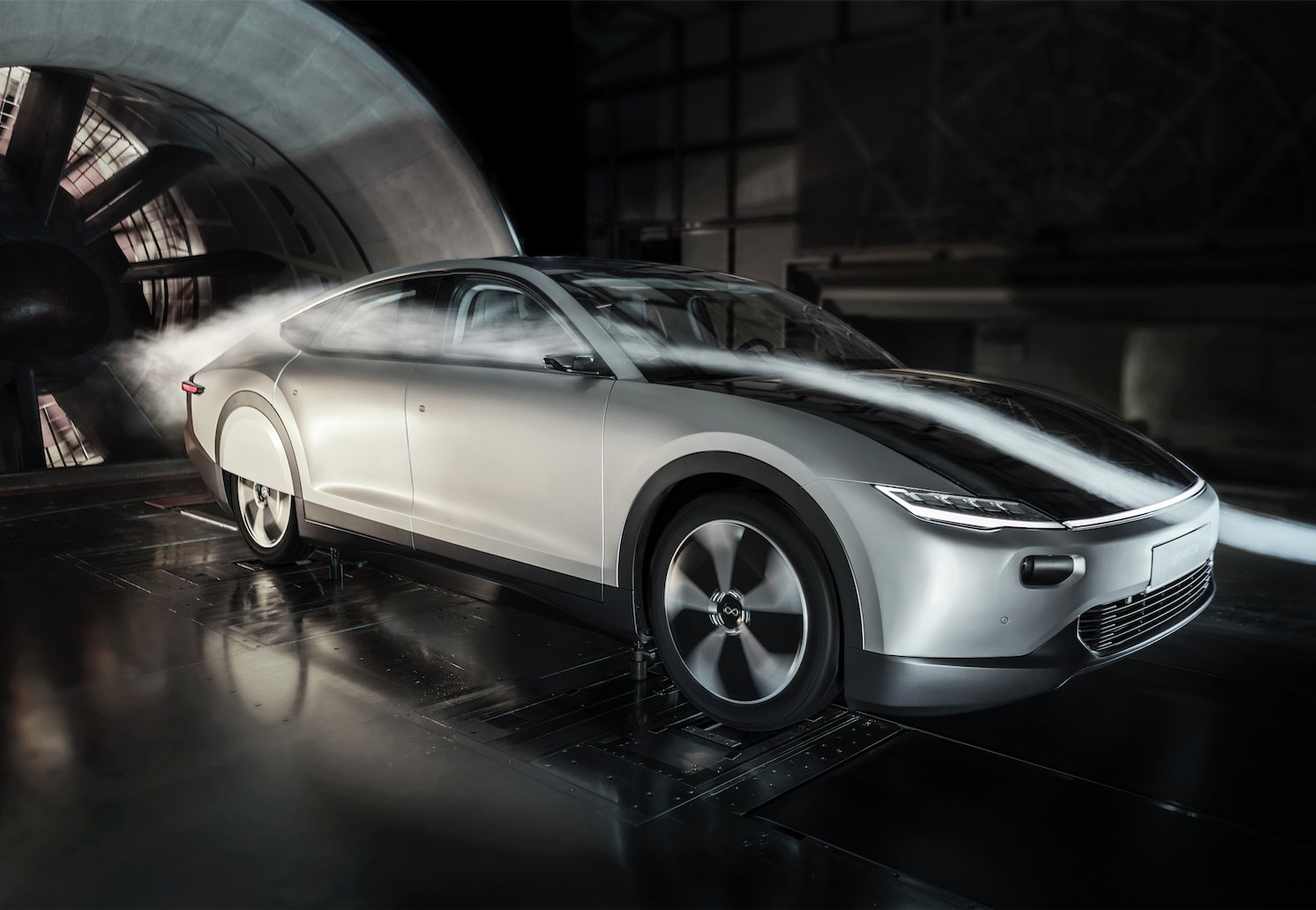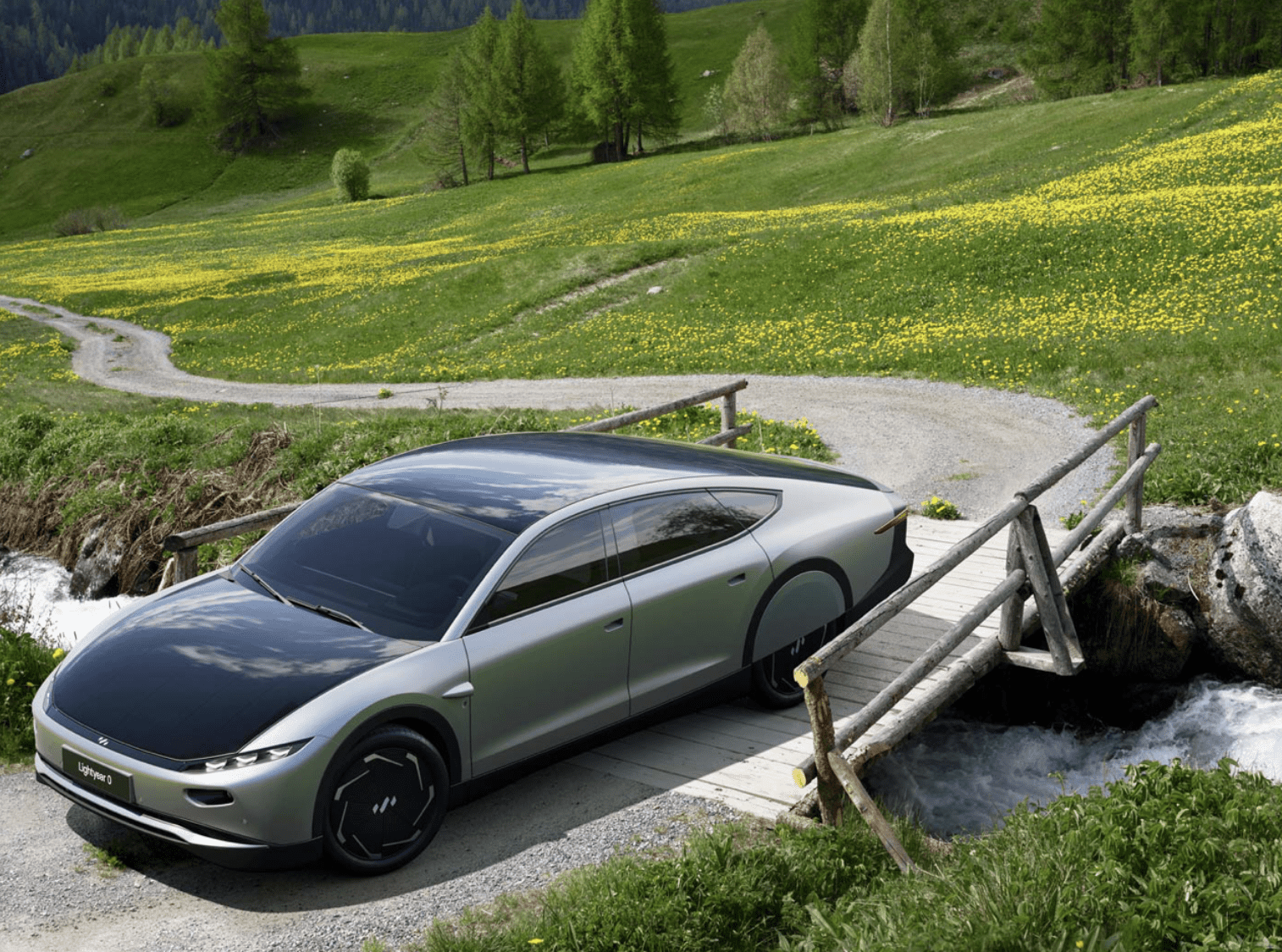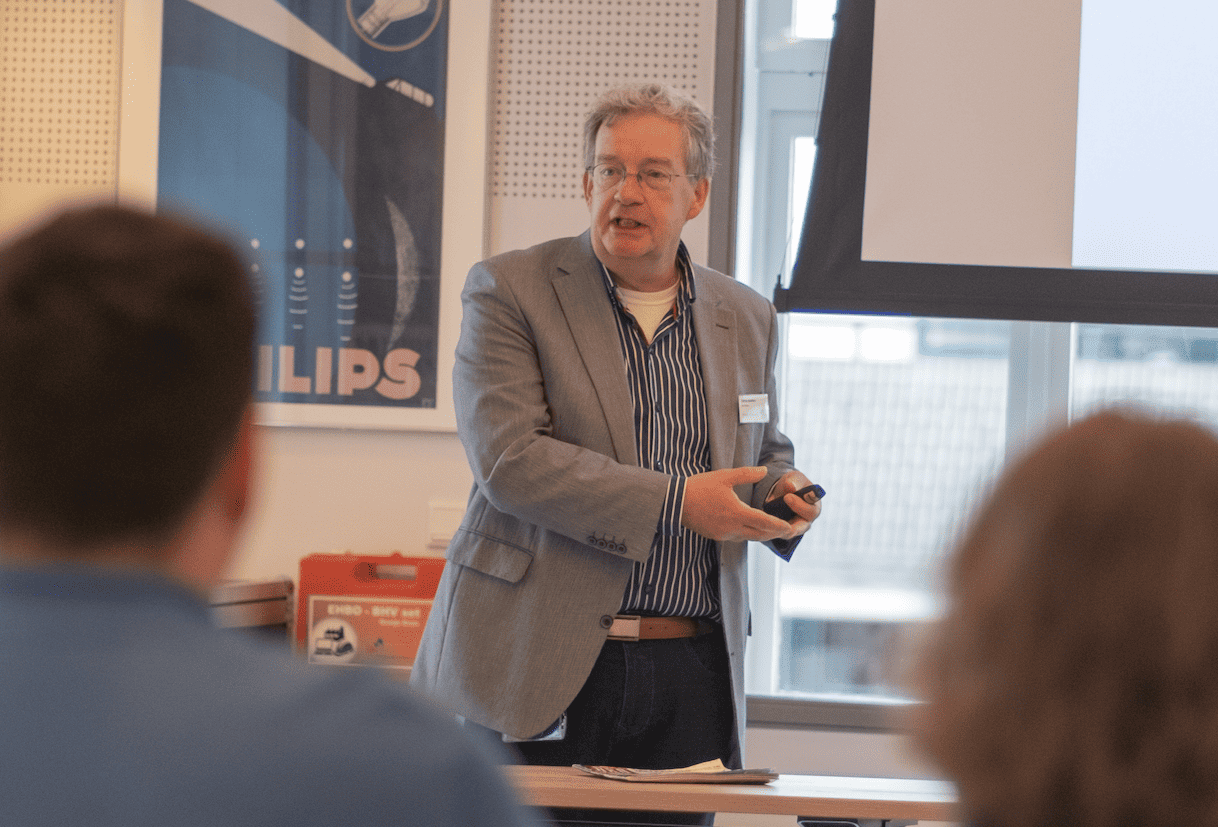
The Lightyear One, the solar car built in Helmond of which the first prototype was unveiled in June, will, according to the engineers of the young company, be more aerodynamic than any other car in the world. This was demonstrated in recent wind tunnel tests carried out at the Eindhoven University of Technology. There, an air resistance coefficient of less than 0.20 was measured, which they consider being a first. The Lightyear people keep the exact data a secret for another while: this will only be announced after the car has been fully developed.
“Lightyear One is more than a car which a solar panel is attached to”, says the company in a blog post about the wind tunnel tests. “It is special because of its efficiency-driven design, which allows it to get the most out of every ray of sunlight. Whether it be about aerodynamics, efficient energy or material use, Lightyear One is built to perform.”
In order to achieve the highest possible range, most electric car manufacturers work with the largest possible battery capacity. Lightyear chose another solution, partly because of the extra weight of these batteries: solar panels combined with aerodynamics and the highest possible efficiency. As a result, Lightyear One should be able to achieve up to 60 km of extra range per day, not only thanks to the efficiency of the 5 square meters of solar cells but also because of a design optimized for minimal energy consumption, the company says.
The elongated shape of the car was initially designed to accommodate as many solar cells as possible, but now it is also helping to streamline the design of the car. Next to the solutions already known from other cars, such as wheel arches and the replacement of side mirrors by side cameras, the length of the vehicle also helps with this. In addition, using light composite materials and a smaller battery, Lightyear One drastically reduces weight and was able to enter a ‘lightweight cycle’: by making one part of the car lighter and more efficient, other parts can also become lighter.
Another helpful feature is the choice of four light in-wheel engines to replace the central engine, making the transmission of energy more efficient.
Based on all these differences, Lightyear claims to be up to twice as efficient as ordinary electric cars, allowing longer distances to be covered without recharging in between.








